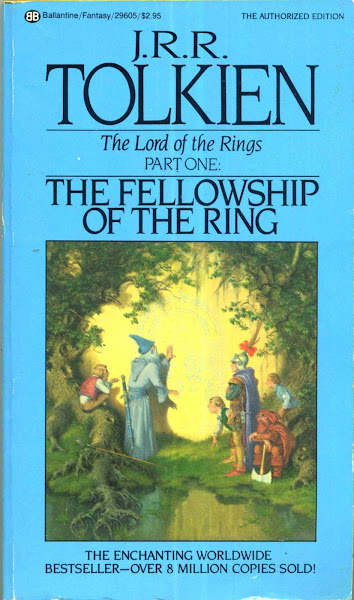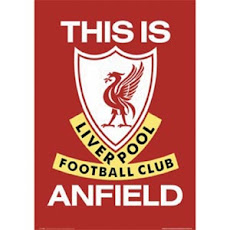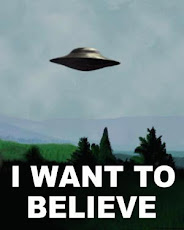 |
| Virgilio "Baby" Dalupan on the bench of the Ateneo Blue Eagles |
1975: Year of the
Eagle
by rick olivares
(To the tune of the Beatles’
“Sgt.
Pepper’s Lonely Hearts Club Band”)
It was 30
years ago today, when Dalupan taught the boys to play.
They’ve been
going in and out of style.
But they
were guaranteed to make Ateneans smile.
So let me
re-introduce to you …
The
championship team of yesteryear …
The Blue
Eagles of 1975.
The Season of their Discontent
The
year was 1975.
The
United States evacuated the last of its citizens from embattled Saigon. A
dropout from Harvard founded a company called Microsoft. VHS and betamax video
were introduced. Bruce Springsteen’s Born to Run was released. Paul Simon was
“Still Crazy After All These Years.” And … one Tiger Woods was born.
On
the home front, the Philippine Basketball Association opened its maiden season much
to the delight of local cage fans everywhere. Over at the NCAA, Ateneo De
Manila was picking up the pieces of a season gone awry.
There
were high hopes for a pennant during the 1974 season (the title eventually went
to De La Salle, which won the last of their five NCAA titles). The team, in
spite of fielding some eight rookies, won five straight to keep pace with the
JRC Heavy Bombers and the Green Archers before disaster struck. Conrad Banal
(brother of later Blue Eagles Coach Joel Banal) who was finally back in the
line-up after a near disastrous injury and Toy Dalupan (Coach Virgilio “Baby” Dalupan’s
son) were suddenly lost to academics. Upset at the loss of two key men and the
lack of academic support for his players, Coach Dalupan resigned in the middle
of the season. Cipriano Unson, S.J., took over the coaching reins but team
morale had already gone south. A season that seemed promising ended when the
team limped into the homestretch with three devastating losses. The silence
from Loyola Heights was deafening after that.
The
school administration immediately sought to repair the damage and mend fences with
Dalupan, who eventually returned to the fold. “With Fr. Unson’s assurance that
steps are being taken to look after the player’s academic needs, I have decided
to return,” said the Maestro, a former Ateneo cager himself (1947-49), who was about
to enter an era of unparalleled coaching success in the PBA.
Ateneo Reloaded
With
things falling into place, there was an air of excitement surrounding the
summer before the 1975 NCAA Season. Dalupan was not only back but this time
around, he had Adrian “Bong” Go (who would later coach Great Taste in the pros)
to assist him. Go, who was a product of ex-Boston Celtic great Ed McCauley’s
coaching school, made a name for himself by steering the Ateneo De Davao
Knights to a fourth place finish in the National Seniors Tournament the year
before.
The
Blue Eagles on the other hand, were a potent mix of seniors (co-captains Gerry
Versoza and Max Estrada), a smattering of talented sophomores (Fritz Gaston,
Joy Carpio, Chito Narvasa, Pons Valdez, Maling Estrella) who now had a year of
collegiate ball experience under their belts, and four exciting rookies (Steve
Watson, Padim Israel, Louie Rabat, and Johnny Perlas).
Watson,
despite being only a high school senior, was invited by school officials to try
out for the seniors team. “Steve was special,” recounted his high school coach
and former Blue Eagle Dodie Agcaoili (’58 & ’61 NCAA Champs). “He led the
Blue Eaglets to back-to-back titles against a tough field that saw us battle
the Loyzaga brothers in San Beda and Ricky Relosa in Mapua. Steve was not only
a great rebounder but was a scoring machine. Against FEU in the National Intercollegiate
Tournament, he scored a record 64 points! And he was only in high school. Not
even Caloy Loyzaga scored that much!”
“Hell,
I was nervous, man,” recalled the former King Eagle. “I used to watch these
guys (the Ateneo seniors) play and they were my idols. And suddenly, I was on a
team with them.” But Watson was such a prodigious player that the transition to
the collegiate game didn’t take too much trouble. Not since Caloy Loyzaga led
the Red Lions to the NCAA title as a high school senior has a player been so
heralded upon his entry into the collegiate ranks.
Sportswriter
Recah Trinidad glowed about Steve, the son of an Australian father in Sports
Weekly Magazine, “Watson is only a high school student but his game already
carries an inkling of hard-earned poise and power.” Watson described to be
slightly taller, faster, and deadlier than his senior counterparts would go on
to lead Ateneo and the league in scoring for the next three seasons.
Padim
Israel on the other hand, was a legend in the playgrounds of the Ateneo.
“Nababalitaan namin yung Padim Israel, hari ng IAC,” recalled Gerry Versoza who
himself was a walk-in from St. Louis University in Baguio. “Matunog na matunog
yung pangalan niya, so Coach Baby invited him. Kung napapanood mo si Tayshaun
Prince of the (NBA’s Detroit) Pistons now, ganun si Padim noon.” With a
wingspan of a pterodactyl, Padim was a defensive specialist who was known for
his nifty stretch lay-ups and bank shots.
Louie
Rabat, who had moved up from the high school champs, was eager to reclaim his
father, Frankie’s title of “the Rajah of Rebound.” He would add much needed
muscle underneath the boards backing up Estrella and Carpio.
The
team was not only fresh and reinvigorated but was finally, healthy. But with
one notable exception. During the 1974 season, Fritz Gaston was hobbled by a
knee injury that limited his effectiveness. Sensing that this team’s time had
come, he came back too soon. Playing in pain, the knee injury never properly
healed and would haunt him all the way to the pros.
Gaston
and the multi-talented Joy Carpio were high school teammates on a UST Glowing
Goldies squad coached by Francis Wilson. Unlike their seniors counterparts, the
UST high school team always figured in the UAAP finals but would always end up
in second place against the more powerful UE teams. During the tryout
for the UST collegiate team, their seniors counterparts treated the two like outcasts prompting the two to transfer.
“I
wasn’t even thinking of going to Ateneo,” remembers Carpio with a laugh. “But
Fritz said one day, ‘Dun tayo sa Ateneo, maganda yung jacket nila.’ Syempre,
malaking attraction to play for Baby Dalupan, so lumipat kami sa Ateneo kahit wala
kaming kakilala. At least, welcome kami dun.”
 |
| Gerry Versoza throws up a shot. |
Versoza,
who was the anointed King Eagle of that year, found kindred spirits in Gaston
and Carpio. “I was from St. Louis University in Baguio and I didn’t know anyone
in Ateneo. I passed the ACET and was thinking of a quiet life as a student.
While I played high school ball in Baguio, I never thought I’d play for the
Blue Eagles. While looking at some PE classes at Loyola Center (Blue Eagle Gym
today for all you Gen Y’ers), I saw a notice about the basketball tryouts. I
was just glad I made the team.”
Another
player who would play a huge role that year was another senior -- Chito
Mistades, the jumping jack from San Sebastian Recoletos High School who
incredibly started out as a volleyball player. Mistades was a contender for the
1974 MVP Award and had a knack for making timely shots in bunches. Louie
Ortiz-Luis wrote of Mistades in the Guidon that year: “(Chito) has an uncanny
sense for being at the right place at the right time. But his biggest asset was
the spring in his legs.”
A Portent of Things to Come
With
the pieces to the championship puzzle in place, the Blue Eagles embarked on an impressive
summer campaign in the National Seniors Basketball Tournament (the NCAA season
was followed by the National Seniors and the season-ending MICAA) where they
finished with a 5-3 record and beat pro-teams San Miguel, U-Tex, and Filman
Bank. Rounding out the rest of the team were Ricky Lacson, Chito Narvasa, Pons
Valdez, Monette Araneta (who came from LSGH), and Joey Pengson.
Because
of their impressive showing, the Blue and White squad was invited to
participate in the Philippine Invitational Basketball Championship. They
finished 3-3 and beat an Yco-Tanduay team that featured former Blue Eagle
Boysie Henares and then resoundingly trounced the FEU Tamaraws twice.
“We
were teenagers up against mostly grown men,” recounted Carpio. “The high level
of competition, especially against a guest-team from South Korea, really
toughened us up.”
“We
didn’t win any of those tournaments but we didn’t mind,” said Versoza who knew
that the team’s balance and depth played in their favor. “The ultimate goal was
the NCAA championship.”
“Those
games showed that we could play with the best of Philippines basketball,”
recalled Dalupan. “It meant we were ready for the NCAA season.”
Hot and Cold: Early Season Woes
On
July 6, 1975, the Blue Eagles opened the 51st edition of the NCAA by
taking the floor in the old Rizal Memorial Coliseum against a familiar and dangerous
foe, the Letran Knights.
Letran’s
hallmark has always been its rugged defense and the Freddie Webb-mentored squad
knew that the only way they could keep pace with the Hail Mary Squad was to
bludgeon the Blue Eagles during their incursions in the lane. Despite being
foul–plagued, the Knights remained within striking distance and were down 48-44
during the half.
The
ugly ball continued during the early second half where the teams continued to
rack up fouls like it was going out of style. “Man, that was one ugly game,”
winced Watson as if he could still feel those chops and hacks he received all
those years ago. A total of 73 fouls were called during that game, a dubious
record if there was ever one, but Ateneo made Letran pay for its roughhousing
tactics by converting on 72% of its freebies as opposed to their opponents’ 58%
conversion from the stripe. With less than 10 minutes in the game and Letran
threatening at 69-68, Watson, Versoza and Mistades blew the Muralla-based squad
of Abe Monzon, Alex Marquez (who would later transfer to La Salle), and Vicente
Beso away with a crippling 26-point end-game explosion that saw Ateneo notch
its first win, 95-84.
Despite
the 1-0, Dalupan was unhappy about the way his wards played against the
Knights’ brand of basketbrawl so he threw them into three brutal practices that
had the well-conditioned Blue Eagles panting for breath. “Coach wanted us to
stay with our offense no matter what,” explained Versoza.
“There’s
playing basketball… and playing basketball the right way,” thundered Dalupan.
“We didn’t come here to be hooligans. We came here as Ateneans.”
With
fire in their eyes, the Blue and White team nuked the San
Sebastian Stags 86-68 with a hellacious and suffocating man-to-man defense. "Message taken," recalled Narvasa after the satisfying win, "Message sent."
A
powerhouse line-up and an early 2-0 record had many Ateneans thinking of a sweep
en route to a first round pennant. With old nemesis, the Jose Rizal Heavy
Bombers on deck, many an Atenean expected a battle royale. Instead, both
conspired for bad theater as both teams shot blanks with Ateneo making only
.386 of its field goal attempts as opposed to JRC’s .310. But the Bombers
proved steadier at the free throw line in the end game to prevail 71-66.
“Kung
akala namin galit si Dalupan after the Letran game,” recalled Mistades, “eh,
parang pumutok yung Mayon volcano pagkatapos.”
Despite
being touted as prohibitive favorites to snatch the crown atop La Salle’s head,
this was relatively a sophomore and rookie-laden team and it showed at times.
“One of my greatest fears early that year was that because of the talent that
we had, some might forget the team game and prefer to go one-on-one,” revealed
skipper Versoza whose crucial miss during Ateneo’s end-game rally against JRC
deflated the blue and white gallery. “We all knew that we had a great team from
the first man to the last one off the bench.”
Finding the Range
With
an Indian run against Mapua, San Beda, and La Salle on the horizon, the Blue
Eagles had to find their game or relive the nightmare of a season on the brink.
And find their game they did as they shellacked the Cardinals 106-94 and outlasted
the Chuck Barreiro and Tony Gagan-led Red Lions 79-70 to set up a memorable
game against archrival La Salle.
With
1:10 left in the game and the Green Archers up by four, center Maling Estrella
nailed a clutch jumper to cut the deficit to two. With Archer point guard Peter
Ley setting up a play at the 15-foot line, Blue Eagle skipper Versoza swiped
the ball and sprinted down for an uncontested lay-up. Game tied. And the
Fabiliohs reached a deafening crescendo. “When Gerry stole the ball, I knew
that there was no way we were going to lose this game,” said Watson.
With
21 seconds left to salvage a victory, the Archers misfired on their final
offensive. Louie Rabat hauled down the
rebound and immediately dished to Versoza who drove through a porous La Salle
defense to nail a one-handed jump shot from 15 feet out. With a raucous Ateneo
gallery drowning out the La Salle cheers, the rattled Archers lost control of
the inbounds that fell into the hands of -- who else -- Versoza, who converted
two freebies to ice the game.
The
victory over La Salle gave Ateneo a 5-1 record and set-up a first-round
championship game against their only tormentors JRC. If the Shaw
Boulevard-based squad was hoping for repeat performance against the Loyolans,
they were in for a rude surprise for on August 10, 1975, the Blue Eagles bucked
the pressure of an error-filled game to win the first round flag 76-73. Watson,
held to a measly six points last time around, scored 18 points to pace the team
with the marginal points off a jumper and a pair of free throws after a foul by
the Heavy Bombers’ Cris Calilan (who would ironically later go on to skipper
the Blue Eagles to their first UAAP title in 1987). “It was a team effort,”
declared a visibly happy Dalupan despite the close score. “We dictated the pace
and never lost our composure despite JRC’s last-ditch rally. Now all we have to
do is win the second round.”
Juggernaut
The
second half of the season saw a more relaxed Blue Eagle team take to the court.
They were already assured of a finals berth by the NCAA ruling that the first
round champion will meet the second round pennant winners for the NCAA title.
With a foot inside the door, the Blue Eagles breathed a little easier and went
on to make short work of the rest of the competition. “Everything started to
click from there,” marveled Watson at the well-oiled machine that the Blue
Eagles had become. “We just flat out killed everyone.”
“Kahit
sino bunutin mo sa bench na ‘yan, eh gagawa yan,” admired the Maestro about the
depth and talent of the team.
“We
never had a fixed starting five,” further expounded Carpio. “Coach would use
different players depending on kung sino yung kalaban. So dapat ready ka to go
at all times.”
“That
gave every player the confidence they needed,” added Gaston. “And hindi kami
ma-scout na mabuti ng kalaban because on any given day, hindi mo alam kung sino
yung gagawa. We ran only a few set plays but there were so many options that anyone
of the five players on the floor could score. We ran that play pretty much all
the time. They never quite caught up to it. Ganun kagaling si Coach Dalupan.”
Blue Eagle the King
With
a near-spotless 12-1 record, all Ateneo needed to do was win its final
assignment against the Letran Knights who were determined at all costs to
prevent an Ateneo sweep of the 2nd round. A sweep meant an outright
championship for Ateneo since the Blue Eagles already claimed the first round
flag. But the Blue Eagles were not to be denied. They walloped the Knights
amidst a sea of blue in steamy Rizal Memorial Coliseum. As the final seconds
ticked off the clock, some of the players hoisted up Dalupan for the
traditional victory ride. “Ang sarap ng panalo na yun,” smiled Dalupan. When
the final buzzer sounded, the players embraced and whooped it up with the ecstatic
crowd that burst into song with Raul Manglapus’ “Blue Eagle the King.”
“All
I could think about was, ‘Yeah, we did it! We did it,” recalled Watson during
the bonfire that was held outside the Loyola Center. “We’re the champions! To play
for Ateneo is a dream. And to win a championship for the school ---pare, that’s
something you’ll remember and be remembered for forever.”
“I
didn’t win a championship while playing for Ateneo and that hurt and bothered
me,” pronounced Dalupan decades after in the living room of his home in Loyola
Grand Villas in Quezon City. “When I came back to the school in the 1970s, I
knew there was unfinished business. Coaching the Blue Eagles to back-to-back
championships is one of the greatest and most fulfilling accomplishments of my
life.”
The Aftermath
The Blue Eagles’ triumph in 1975 was
Ateneo’s 13th NCAA cage title. That Blue Eagle team will go down as
one of the all-time best in the school’s illustrious basketball history. They
were part of that magical year’s double double: basketball and volleyball
champions in the collegiate and high school level. They repeated the feat the
following year despite losing several key players (Versoza, Estrada, and
Mistades). Dalupan was on the sidelines for the back-to-back title but would
soon turnover the reins to Bong Go (a rule was passed in 1977 that forbade
coaches to pull double duty in the pros and collegiate ranks). Steve Watson, Joy Carpio, and Fritz Gaston
took center stage the following year and were likewise drafted to beef up the
national team. Five players on that team
went on to play in the PBA: Watson, Carpio, Gaston, Padim Israel, and Bambi
Kabigting. Carpio would play a good chunk of his basketball career for the
Maestro following him in Crispa and Great Taste where he would win more
championships. Watson would finish his studies at Fairfield University in
Connecticut before going back to play
pro ball in the Philippines. But before all that, the Blue Eagles would go on
to face the San Beda Red Lions for the 1976 and 77 titles. The Red Lions were
led by Watson’s Ateneo Grade School teammate, Chito Loyzaga who denied Ateneo’s
bid for a three-peat when they lost an infamous closed door game at the Araneta
Coliseum after Pons Valdez’ last shot was disallowed. It would be another 11
years before a cage title would be brought home to Loyola Heights.









No comments:
Post a Comment